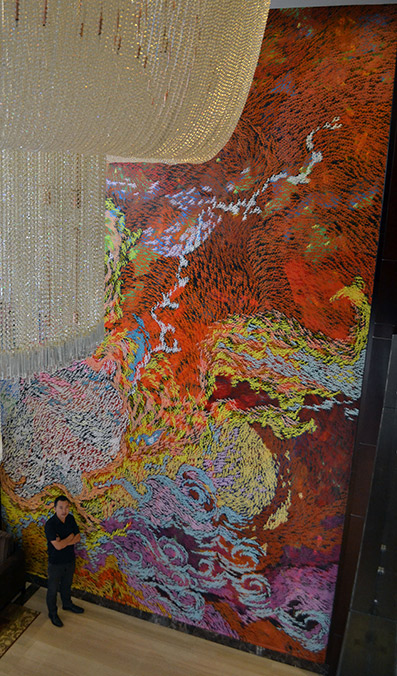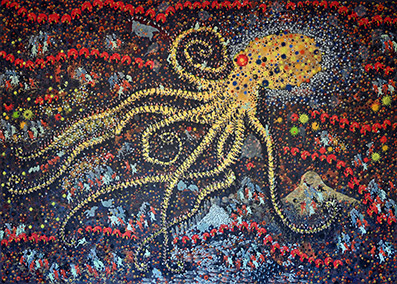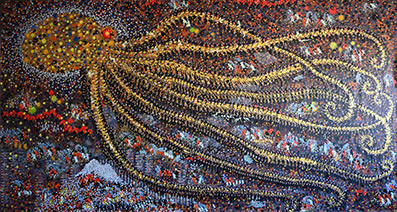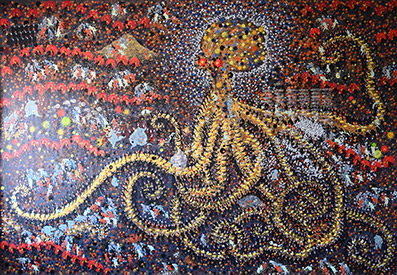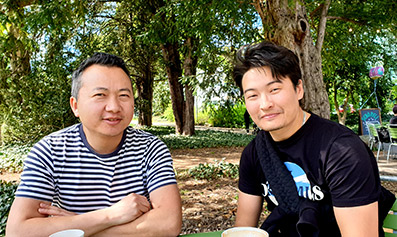Zolboo Sandagjav
OtGO ‚The Whole in a Single‘
University of Bern, Switzerland. December 3, 2022
‘Microhistory’
has been offering an alternative pathway to many historians and
researchers who seek to find a new way to approach to the past. In
short, ‘microhistory’ is a historical approach which deals with small
units in the past such as an individual, an event or a place etc. and
the microhistorians tend to study these particular cases in the hope
that they will explore the historic elements which are often avoided,
dismissed or simply forgotten within the macrohistory. This specific
approach was first introduced by the Italian historians of 1970s and
1980s, in particular, Carlo Ginzburg and Giovanni Levi played
increasingly important role in the development of Italian
‘microstoria.’ However, the history of ‘microhistory’ does not interest
us, but its concept of ‘scale.’ Because I am sure that those who are
reading this short text certainly wonder what this mysterious
‘microhistory’ has to do with OtGO’s
paintings or with the art in general. Not as an art critic which I am
not for certain, but as a simple historian, I will briefly explain to
you why the concept of scale of ‘microhistory’ suggests an interesting
insight into OtGO’s ‘style.’
Now, as we can see, there are two different dimensions: ‘micro’ on one hand and ‘macro’ on the other. Imagine that you are looking at ‘a drop of a blood’ or ‘a piece of a flesh’1 through a microscope, you are able to see the tiny little elements, their shapes and their movements which are not visible to human eyes. In the same vein, through the lenses of ‘microcosm,’ the microhistorians attempt to reveal the unknown facts about an individual who lived a century or even a couple of centuries ago. Furthermore, it is expected that the personal opinion, worldview, motivation, belief and ideology of this individual can be deconstructed by giving special emphasis on the agency of this individual. In relation to the concept, Ginzburg wrote:
‘A number of biographical studies have shown that in a modest individual who is himself lacking in significance and for this very reason representative, it is still possible to trace, as in a microcosm, the characteristics of an entire social stratum in a specific historical period, whether it be the Austrian nobility or the lower clergy in seventeenth-century England.’2
To put it differently, the historians who employ ‘microhistory’ in their journey to the past strongly believes that a single historical case can represent ‘the whole in a single case.’3
Now the relevance of the ‘scale’ concept within the microhistory to the interpretation of OtGO’s paintings is that we can experience the aforementioned two dimensions (micro and macro) or ‘the whole in a single case’ from his works. In other words, looking through our ‘imaginary’ microscope and changing the scale from micro to macro or vice versa, the tiny little element that we notice just now can resemble the whole. The prime example of this ‘micro-macro’ shift is OtGO’s giant piece of art ‘Roaring Hoofs’ at Tuushin Hotel, Mongolia and among other thing, his recent work ‘The Last Supper.’ Every single element like horse, monkey, man or even a skull has a story to tell. This is exactly the beauty of OtGO’s paintings. However, I would give my readers the same advice as OtGO gave me when we met for the first time, ‘do not search for a meaning.’ Truly, some individuals in the past had achieved something great that the people admire for generations to come , some lived a simple life of which only few remembers, some lived a meaningless life, wasted on a bottle of vodka, and some did not even have a chance to see the light. However, these individuals, these tiny little creatures of our past, regardless of what life they had, shaped today’s world, the world we live in. OtGO, through his art, reminds us of our past both in micro and macro level.
Not to mention my unfamiliarity with the art, the painting in particular, I don’t stand a chance to be considered as an art critic. However, with this short text, I simply offer the readers and the admirers of OtGO’s ‘style’ a way of enjoying his exquisite artworks. It is my deepest hope that you find this short text useful.
Now, as we can see, there are two different dimensions: ‘micro’ on one hand and ‘macro’ on the other. Imagine that you are looking at ‘a drop of a blood’ or ‘a piece of a flesh’1 through a microscope, you are able to see the tiny little elements, their shapes and their movements which are not visible to human eyes. In the same vein, through the lenses of ‘microcosm,’ the microhistorians attempt to reveal the unknown facts about an individual who lived a century or even a couple of centuries ago. Furthermore, it is expected that the personal opinion, worldview, motivation, belief and ideology of this individual can be deconstructed by giving special emphasis on the agency of this individual. In relation to the concept, Ginzburg wrote:
‘A number of biographical studies have shown that in a modest individual who is himself lacking in significance and for this very reason representative, it is still possible to trace, as in a microcosm, the characteristics of an entire social stratum in a specific historical period, whether it be the Austrian nobility or the lower clergy in seventeenth-century England.’2
To put it differently, the historians who employ ‘microhistory’ in their journey to the past strongly believes that a single historical case can represent ‘the whole in a single case.’3
Now the relevance of the ‘scale’ concept within the microhistory to the interpretation of OtGO’s paintings is that we can experience the aforementioned two dimensions (micro and macro) or ‘the whole in a single case’ from his works. In other words, looking through our ‘imaginary’ microscope and changing the scale from micro to macro or vice versa, the tiny little element that we notice just now can resemble the whole. The prime example of this ‘micro-macro’ shift is OtGO’s giant piece of art ‘Roaring Hoofs’ at Tuushin Hotel, Mongolia and among other thing, his recent work ‘The Last Supper.’ Every single element like horse, monkey, man or even a skull has a story to tell. This is exactly the beauty of OtGO’s paintings. However, I would give my readers the same advice as OtGO gave me when we met for the first time, ‘do not search for a meaning.’ Truly, some individuals in the past had achieved something great that the people admire for generations to come , some lived a simple life of which only few remembers, some lived a meaningless life, wasted on a bottle of vodka, and some did not even have a chance to see the light. However, these individuals, these tiny little creatures of our past, regardless of what life they had, shaped today’s world, the world we live in. OtGO, through his art, reminds us of our past both in micro and macro level.
Not to mention my unfamiliarity with the art, the painting in particular, I don’t stand a chance to be considered as an art critic. However, with this short text, I simply offer the readers and the admirers of OtGO’s ‘style’ a way of enjoying his exquisite artworks. It is my deepest hope that you find this short text useful.
Zolboo Sandagjav
University of Bern
03.12.2022
University of Bern
03.12.2022
-----------------------------
1 I specifically chose ‘blood and flesh’ simply because our history is mostly violent.
2 Ginzburg, Carlo. (1992). The Cheese and The Worms, translated by John and Anne Tedeschi, The John Hopkins University Press, Baltimore, p. XX.
3 Magnusson, Sigurdur Gylfi. and Szijarto, Istvan M. (2013) What is Microhistory? Theory and Practice. London and New York: Routledge, p. 75.
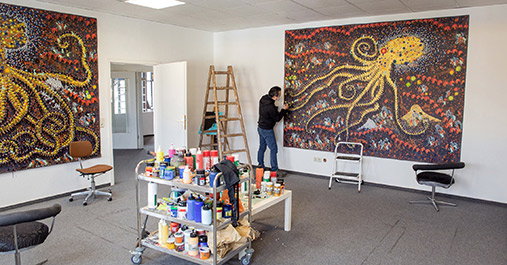
Triptych: The Last Supper by OtGO | Inside the Studio: Work in Progress | Photo by Anna Wyszomierska
